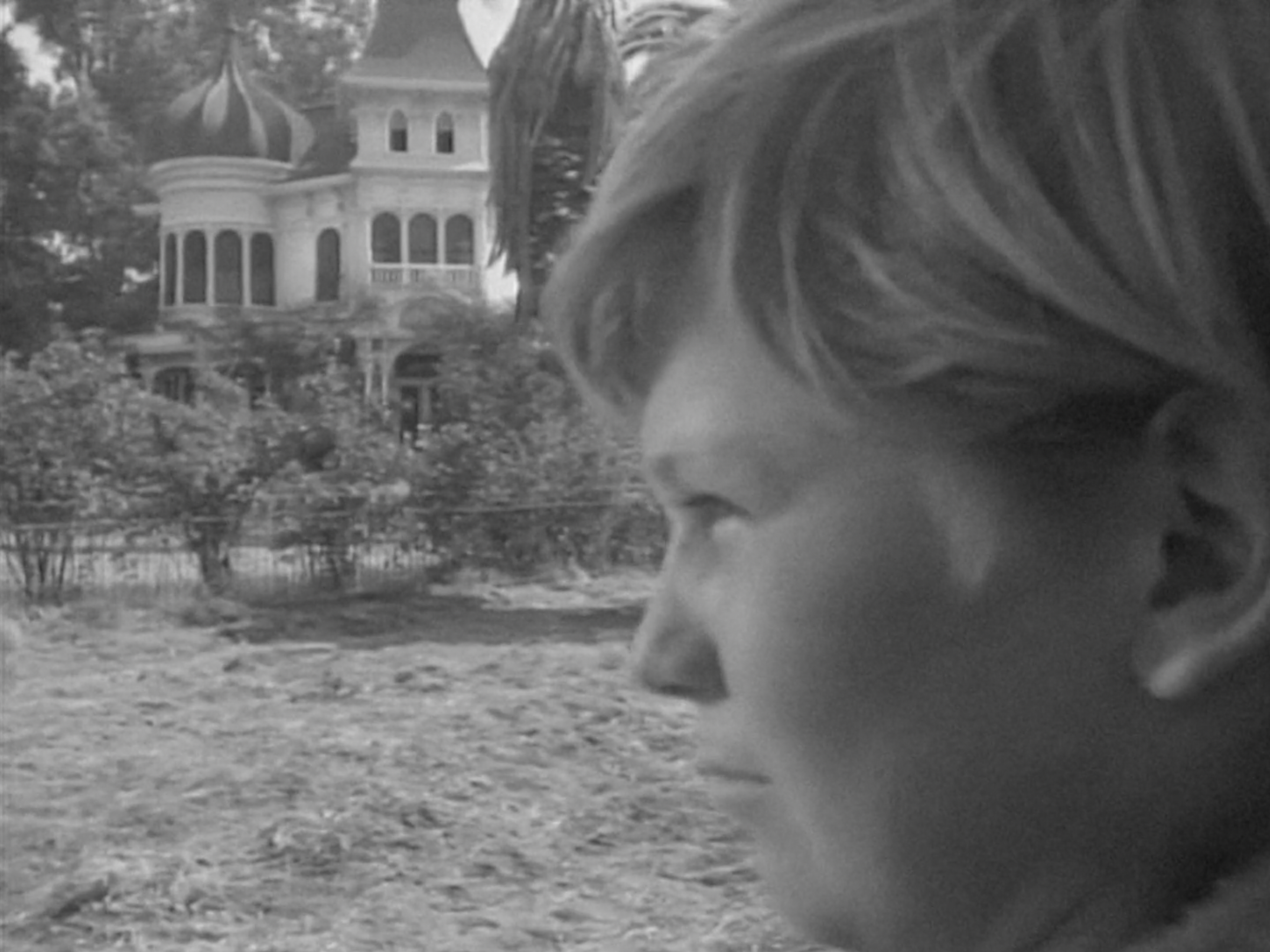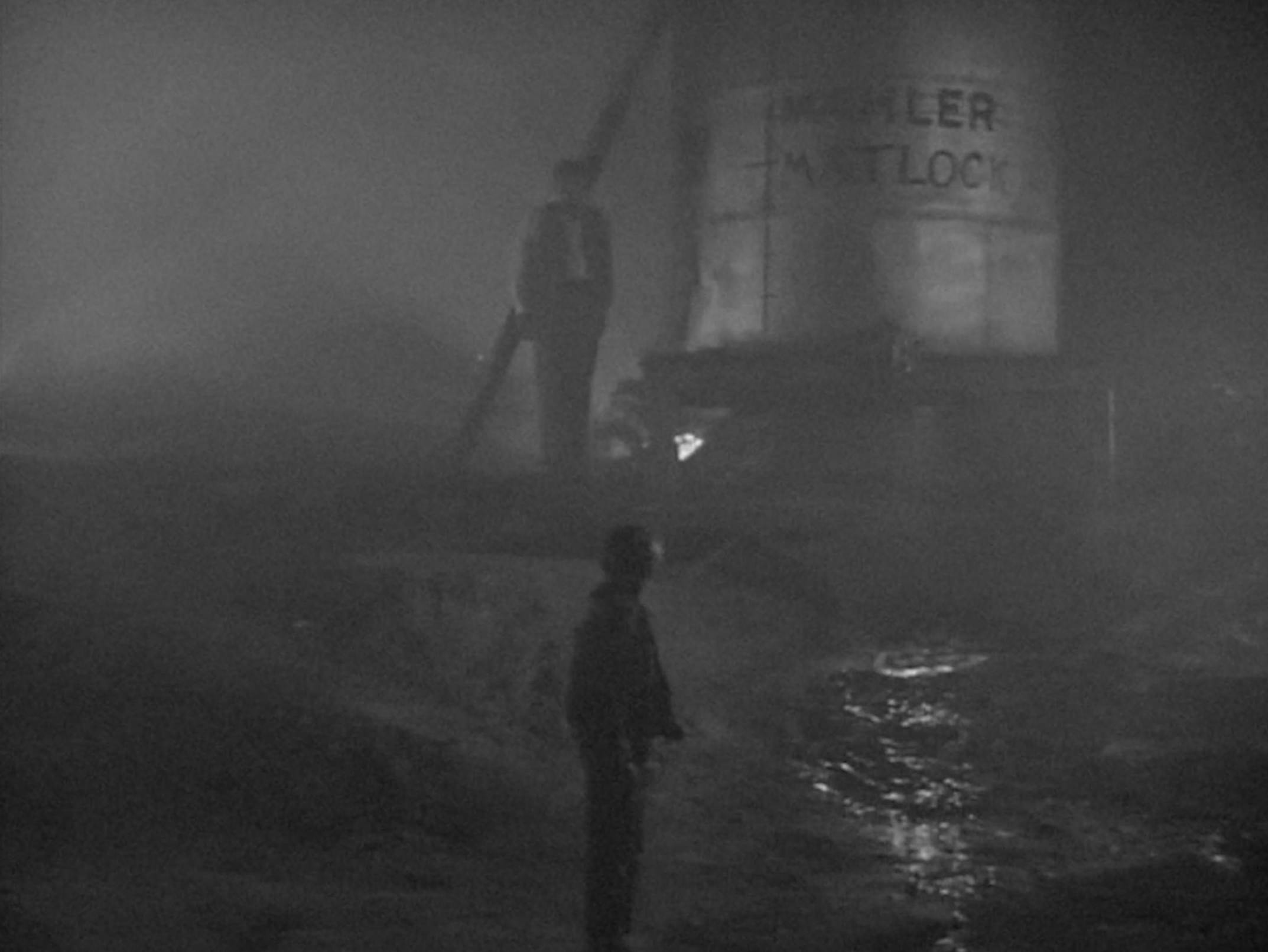The Children’s Court: Disillusionment and Prejudice in Talk About a Stranger
Detours, episode 8
The Children's Court: Disillusionment and Prejudice in Talk About a Stranger
Stephen Broomer, November 7, 2022
It all begins on Halloween night. The neighborhood children crawl towards the old abandoned farmhouse on their bellies with all the discretion of servicemen launching a sneak attack. They’re there to break windows, what passes in their revelry as a victimless trick. They don’t expect to see the stranger emerge, a large man with an insistent stare, his shock reading to them as something dangerous. In this video essay, Stephen Broomer addresses the simple morality and complex staging of MGM's Talk About a Stranger, its curious staging of small town politics and its lessons of staying judgment, offered in the shadow of the Cold War.
SCRIPT:
It all begins on Halloween night. The neighborhood children crawl towards the old abandoned farmhouse on their bellies with all the discretion of servicemen launching a sneak attack. They’re there to break windows, what passes in their revelry as a victimless trick. They don’t expect to see the stranger emerge, a large man with an insistent stare, his shock reading to them as something dangerous. While the other children flee—their fear is part of the fun—one child pulls his mask down. They reveal their faces to each other, the boy and the stranger, and for the boy, this encounter is more than just a surprise, it’s an omen; this identifying exchange establishes the terms of the story, for it makes them enemies. This scene tells us a great deal about Talk About a Stranger, even before the stranger, Mr. Matlock, has uttered a word in his Germanic accent: that its conflict will be a generational one, between the play-life of an imaginative child and the nightmare of a haunted adult. It is only later, as Matlock is characterized as foreign and unfriendly, that this conflict takes on a second, more insidious layer, between those who belong and those who, for how they look and sound, don’t belong.
The protagonist is Bud Fontaine Jr., a child who is both naive and precocious, little supervised, one part xenophobe and one part American ideal. He’s a boy with a paper route who dreams of having a dog. He lives in the orange groves of the San Fernando Valley with his folksy, loving parents, and moves through society with remarkable independence. He loves shortcuts, a sign of the impatience and impulsivity that define his character. His dream of dog ownership comes true early in the film, when he’s followed by a stray. The love between Bud and his dog is simple and pure. Bud shows reticence towards the dog at first; perhaps it doesn’t resemble closely enough the manicured hounds of his fantasies. But he warms to the dog, adopts it, and they become mirrors of each other. He names the dog Boy, marking it as his symbolic twin. Boy will be poisoned, an inciting incident that transforms Bud’s perception of society. He blames the stranger.
Bud wants justice, a child’s vengeful justice. He can’t understand why his father won’t beat the man or worse. The distance between Bud and the law is viscerally portrayed when he goes to the police. With the camera assuming the officer’s high vantage point, Bud appears small and insignificant. His concerns are dismissed; the value he places on the dog’s life is dismissed; he is David to the Goliath of an adulthood that lacks compassion and is too busy to listen. Bud's disillusionment leads him to prove the cruelty of children, as he begins a whisper campaign against Mr. Matlock, and, at the encouragement of the town newspaperman, begins his own investigation, gathering circumstantial evidence against Matlock, an investigation built upon the perceived danger of strangers. It’s not just that Matlock is a stranger: he is a Germanic stranger whose aloofness marks him further as an outsider. Bud may be led to his conclusions by the bad experiences he’s had with Matlock: but Matlock is also a convenient scapegoat. Matlock’s outward appearance of callousness and cruelty is later revealed to be rooted in a profound and self-abnegating sense of loss. The xenophobic overtones of Bud’s treatment of Matlock are furthered by another theme that bleeds into the story, the rationing of oil to keep those orange grove lanterns burning, a topic reminiscent of wartime austerity.
For Bud, childhood is both a burden and a gift. His first encounter with perceived injustice is a formative passage, like a child’s first encounter with death. His life is carefree and independent, like the latchkey kids that populate a later generation of American coming-of-age dramas. He bears a mix of naivety and worldliness which marks him as a picaro, as when he lights out for the city, thumbing rides and chasing clues. Still, childhood innocence shapes his understanding of the world as a playground, and at times reality bends to his will, as dramatically illustrated in his playful but threatening encounter with a city kid, and later, in this encounter with a pair of oncoming headlights. Bud is later redressed by his parents for treating their home like a boarding house. There is a disconnection between their expectations of Bud and his behaviour: their son, as they perceive him, is that All-American ideal of worms, snails, puppy dog tails; but their optimism does not extend to the mise-en-scene. Bud occupies a romantic space, the distorted landscape of film noir, where the disjunctive scale of the sets, the contrasts of low-key light, and the position of the lens all conspire to corner him, to excite his pain, to wound his trust and his soul. Guided by a simmering rage over Boy’s death, Bud Fontaine wants to smash this world apart, and when his avenues for seeking adult justice are all exhausted, that’s exactly what he does: he smashes Matlock’s oil tank apart—a gesture that, though he couldn’t know it, imperils his community, and initiates a final confrontation between the two. Bud stands in the long shadows cast by the farmers; they know what he’s done; but still he looks back defiant: “it was because of him.” Those deep shadows; that murky, foggy light; these compositional illusions; the controlled highlights that define figures; this is the work of celebrated cinematographer John Alton at the height of his abilities. Talk About a Stranger allows Alton opportunities to showcase his gifts by allowing for sequences with deep and sinister shadows made all the deeper for their contrast with high-key scenes that suggest the contented sheen of American small-town life. Director David Bradley, best remembered for the cult film They Saved Hitler’s Brain, spoke to James Naremore of his and Alton’s affinity for the Wellesian approach of low-level cameras and sharp depth, and in Talk About a Stranger one sees Alton pursuing these compositional strands, with cameras placed on Bud’s level to adopt his perspective, a technique that often allows the adult players, as well as the environment itself, to loom in the frame; and in the climax, Alton’s deep focus and careful disclosures of space conspire to make Matlock into an ogre. As Bud is pursued, Matlock manifests, in the distance, out of the fog. Alton’s gifts in this regard allow the film a symbolic dimension, furthering Bud’s disillusionment as a state of alienation. In earlier scenes, in his idyll, the land was built for him; with Boy’s death, Bud’s grief transforms it into something unfamiliar. Bud tries to stir up resentment against Matlock, but between the fog cast by his pain, and his shameful, outcast state, it is Bud who has become a stranger in a strange land.
In Dark Borders: Film Noir and American Citizenship, Jonathan Auerbach approaches the xenophobic currents of film noir as both epistemological and moral crises: the film noir asks, what makes an outsider, and how shall they be dealt with. Talk About a Stranger exemplifies the thread of noir that reconciles new suspicions particular to postwar anxieties of sedition, the enemy hiding in plain sight, with questions of unstable identity in a changing world. Perception can change in many ways and on many levels and at a speed that is unpredictable, provoked by the fates, by social transformation, by sudden loss. The gradual changes brought about by the Second World War happen all at once for Bud Fontaine Jr., marking his rapid transit from small-town paperboy into an angel of vengeance. Bud is the dominant model of the growing American citizen, with his dog and his paper route, a generation removed from the mischievous but wholesome figure of Tom Sawyer. The film’s final act will restore Bud, reconciling him with the threat he has come to perceive in this environment. Matlock is revealed to be living in hiding, not from a secret criminal life, but from the shame of having caused his son’s death; Bud, in turn, is taught how to forgive, and to understand the pain of a stranger. Bud’s is a crisis of citizenship particular to America, or rather, to Rosenberg-era America, where pulp fiction, Soviet espionage and growing diversity in an intolerant climate had come together in a terrible storm, creating in the minds of many a subconscious fear that they were living on the wrong side of a mirror.
The simple lesson of Talk About a Stranger is, on one hand, moral: that you can’t judge a book by its cover. It is also, like many postwar films dealing indirectly with the fallout of trench trauma, the holocaust, and the new vigilance of life in a Cold War, a film of brotherhood and alienation and the pliability of identity.





